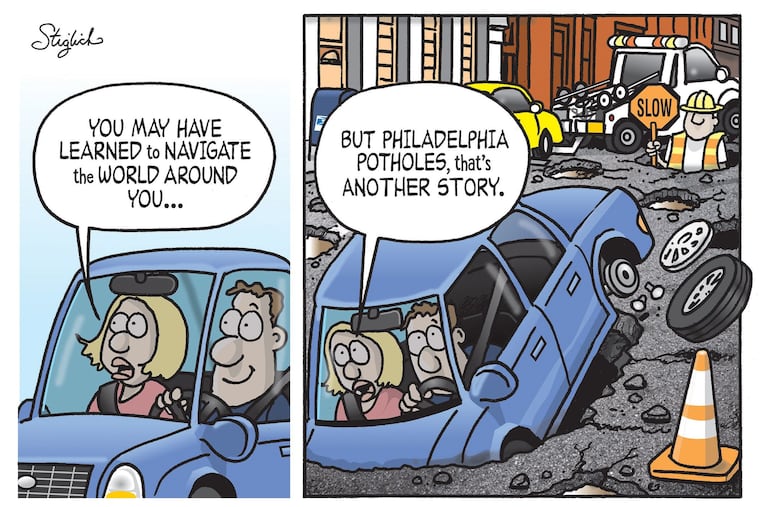Cartoon: Spring in Philly means potholes
Potholes have been known to swallow your car whole, or at least it feels that way.

BANG! Thumpa. Thumpa. Thumpa: These are a series of sounds no driver ever wants to hear. The rhythmic beat of a flat tire.
It’s that time of the year again where potholes are springing up all around us. They can grow several feet in width and have been known to swallow your car whole, or at least it feels that way. If they become large enough, damage to tires, wheels, and vehicle suspensions can occur. Serious road accidents may happen as a direct result, especially on those roads where vehicle speeds are greater.
Potholes are caused by the expansion and contraction of ground water after the water has entered the ground under the pavement. As the weight of cars and trucks pass over the weak spot in the road, pieces of the roadway material weaken, which will cause the material to be displaced or broken down from the weight, creating the pothole.
The Highway Division of the Streets Department maintains over 2,525 miles of public city streets and 50 miles of State roads. However, 360 miles of streets within the city limits are actually state highways, maintained by PennDOT. There are also private streets within the city limits maintained by homeowner associations. Potholes between trolley and train tracks, or within 18 inches outside of the tracks, are maintained by SEPTA.
As of this week, the Streets Department reports it has filled 6,640 potholes since January 1, 2021. Driving around in the city, dodging moon-like craters, it’s painfully obvious they have a lot more work to do.
Editorial cartoons from this week include:
For more editorial cartoons, visit inquirer.com/opinion/cartoons/.